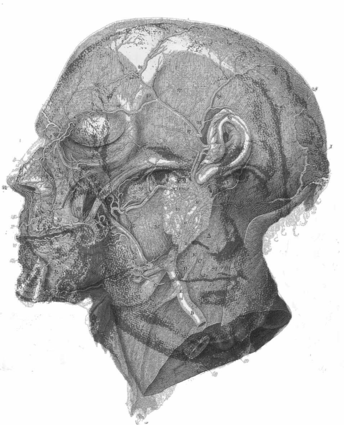Albrecht von Haller1708–1777
Haller journeyed from his native Bern to study medicine first at Tübingen and then at Leiden, where he came under the spell of Boerhaave as well as Albinus. Graduating in 1727, he travelled extensively and studied widely before accepting the invitation to the chair of medicine at Göttingen. He was one of the most influential scientist of his time and an extremely prolific writer, his works spanning from medicine to botanic, anatomy to physiology, physics to chemistry, including literature and poetry. One of his works there was Icones Anatomicae with striking illustrations by Rollinus, and in one of which Haller’s portrait can be seen. In his First Lines of Physiology (which was translated into English by Cullen) he developed the concept of irritability, introduced by Francis Glisson (1597-1677), and added sensibility to it. According to Haller irritability played a role in living bodies comparable to that of Newtonian gravitation in the physical cosmos. For him it was a property mainly restricted to muscle fibres whereas sensibility was confined to nerves and to those structures supplied by nerve fibres. This distinction was to prove contentious amongst his contemporaries, particularly with Whytt and his interpretation of reflexes. Haller envisioned irritability as a physiological force of purely mechanical nature and independent on soul, whereas Whytt adhered to a more vitalistic and animistic view of the phenomenon. In addition to the relevance of his conceptions in physiology and medicine, Haller is important because of his stress on the need for systematic experiments in the study of body functions.
